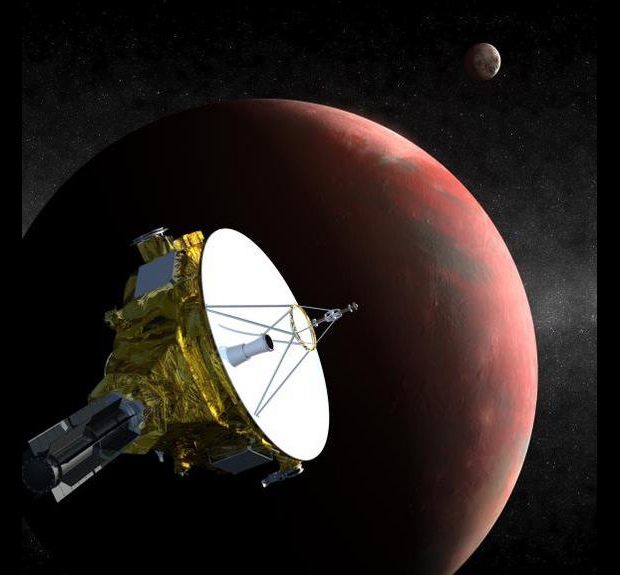
A glitch caused NASA's New Horizons spacecraft to go dark for more than an hour Saturday (July 4), just 10 days before its historic flyby of Pluto.
The probe's handlers lost contact with New Horizons at 1:54 p.m. EDT (1754 GMT) Saturday but were able to restore communications at 3:15 p.m. EDT (1915 GMT).
"During that time, the autonomous autopilot on board the spacecraft recognized a problem and — as it’s programmed to do in such a situation — switched from the main to the backup computer," New Horizons team members wrote in an update Saturday, stressing that the spacecraft is healthy.
"The autopilot placed the spacecraft in 'safe mode,' and commanded the backup computer to reinitiate communication with Earth," they added. "New Horizons then began to transmit telemetry to help engineers diagnose the problem."
Members of an "anomaly review board" are currently investigating the issue and working to get New Horizons out of the protective safe mode and back up to speed. Mission officials said the recovery process could take several days, since it takes about 4.5 hours for commands to get to the spacecraft, which is nearly 3 billion miles (4.8 billion kilometers) from Earth.
"New Horizons will be temporarily unable to collect science data during that time," team members wrote. "Status updates will be issued as new information is available."
The $700 million New Horizons mission launched in January 2006, tasked with performing the first-ever up-close investigation of the Pluto system. On July 14, the spacecraft will fly past the dwarf planet at a distance of just 7,800 miles (12,500 km).
Get the Space.com Newsletter
Breaking space news, the latest updates on rocket launches, skywatching events and more!
While the most exciting science data will be gathered at and around closest approach, New Horizons has already begun lifting the veil on Pluto. Images beamed home in the past week or so have revealed intriguing surface features on the dwarf planet, including large, evenly spaced dark patches near the equator that have scientists scratching their heads.
New Horizons' recent photos have also shown that Pluto is reddish brown while its largest moon, Charon, sports a grayish hue.
Follow Mike Wall on Twitter @michaeldwall and Google+. Follow us @Spacedotcom, Facebook or Google+. Originally published on Space.com.
Join our Space Forums to keep talking space on the latest missions, night sky and more! And if you have a news tip, correction or comment, let us know at: community@space.com.

Michael Wall is a Senior Space Writer with Space.com and joined the team in 2010. He primarily covers exoplanets, spaceflight and military space, but has been known to dabble in the space art beat. His book about the search for alien life, "Out There," was published on Nov. 13, 2018. Before becoming a science writer, Michael worked as a herpetologist and wildlife biologist. He has a Ph.D. in evolutionary biology from the University of Sydney, Australia, a bachelor's degree from the University of Arizona, and a graduate certificate in science writing from the University of California, Santa Cruz. To find out what his latest project is, you can follow Michael on Twitter.









